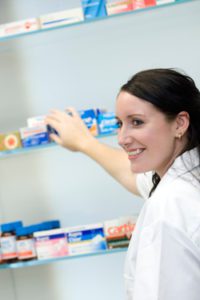 I recently did a talk for a class of pharmacy students at the University of British Columbia. I wasn’t sure what they might already know about Traditional Chinese Medicine and what their views on it would be. I was happy when they asked me lots of questions though and I thought you might have some of those same questions.
I recently did a talk for a class of pharmacy students at the University of British Columbia. I wasn’t sure what they might already know about Traditional Chinese Medicine and what their views on it would be. I was happy when they asked me lots of questions though and I thought you might have some of those same questions.
What is the training for becoming a TCM health provider?
Every province (and state) is different, but these are the regulations in BC:
There are 4 levels of registration for TCM in BC and each allows a different type of assessment and treatment. Both Registered Acupuncturist (R.Ac.) and Registered Chinese Herbalist (R.TCM.H.) require 3 years of training with a minimum of 1900 hours of study and training. A Registered TCM Practitioner (R.TCM.P.) can practice both herbs and acupuncture and they receive a minimum of 4 years with at least 2600 hours. A Registered Dr. of TCM (Dr.TCM) has the highest level of training of 5 years at 3250 hours.
In addition to the schooling, we also need to pass 2 examinations for each (written and practical), take safety courses for each, maintain requirements for good standing of the regulatory body, complete 50 hours of continuing education credits every 2 years, and be insured for liability and malpractice for minimum amount required by the college.
Lotsa hoops to jump! But all of that should be reassuring to you that we’re well-trained and practiced in what we do! All of this happens through the CTCMA (College of Traditional Chinese Medicine Association). The role of the CTCMA is to protect the public by making sure that we follow the rules. If you want to know if someone is a registrant (they should not be practicing in BC if they are not!), check out the listing here: http://www.ctcma.bc.ca/public.asp?cat=search
How many Chinese herbs are there?
There are more than 6000 herbs–including plants, minerals, and animal parts–with 600 used commonly.
Do you prescribe things like tiger bone, bear gallbladder, and rhinoceros horn?
NO! A big emphatic NO! Though they have been used traditionally in TCM in the past, they are illegal in Canada. Not only that, but they are not necessary to use. There are many substitutes that are effective and ethical to use.
What herb is best to treat…[fill in the blank, e.g. headaches]?
In TCM, the key is to obtain a TCM pattern diagnosis. Everyone is different, so 10 people with a headache might all have different herbs and treatments. Not only that, but Chinese herbs are almost always prescribed in combination, almost never as single herbs.
How do you make sure that herbs you prescribe are safe?
An herbal prescription is chosen with safety at top of mind. We consider the length of time that the herbs will be prescribed, the quantity of herbs prescribed, the methods of processing the herbs, whether there’s any risk of conflicting with any pharmaceuticals or other nutraceuticals, each individual’s health issues, and allergies and sensitivities.
Do the herbs come from China? Is the quality safe?
Some of my patients are concerned about the quality of the herbs I prescribe as they hear about quality issues with come products and foods that come from China and other countries. Some problems include that poor quality herbs can low quality or incorrect herbs; can be adulterated with pharmaceuticals; laden with heavy metals, pesticides, fungus, molds; and manufactured in substandard facilities.
But, not all herbs can be painted with this same brush! The herbs I use go through rigorous testing. They are extremely high quality herbs that much attain a Certificate of Analysis (COA). They must pass the strictest criteria of standards from U.S., Singapore, Japan, and E.U. Herbs go through a process of identification that includes selection by qualified professionals, microscopic inspection, chemical identification, and chemical “fingerprinting” (thin layer chromatography) to make sure that the right herb is chosen. Herbs are cleansed of dirt and other foreign particles, prepared with traditional methods, and extracted while making sure to maintain the integrity of the volatile essential oils. They are then concentrated with low temperature methods so as to not destroy any of the components. Every batch is tested with microbiological assays to make sure there is no e.coli, salmonella, molds, yeast, or other contaminants. Gas Chromatography tests for safety, making sure there are no pesticides, fungicides, and herbicides. High Performance Liquid Chromatography measures for key active ingredients while Inductively Coupled Plasma – Mass Spectrometer tests for heavy metals.
Phew! So, as you have learned, there is a lot that goes into the selection of each herbal formula that I create!
Any questions? Ask me!
